Hello friends!
This was supposed to be a late-January check in, then a mid-February check in, but somehow time flew and today is March 1st! Before we get into things, here is the bento. Yesterday was graduation at my school, so teachers had the option to buy a traditional bento lunch. I didn’t originally opt in, but my coworker caught a cold and couldn’t make it, so she let me have her lunch. It was all very delicious. I’m curious how many things in the photo you all recognize!
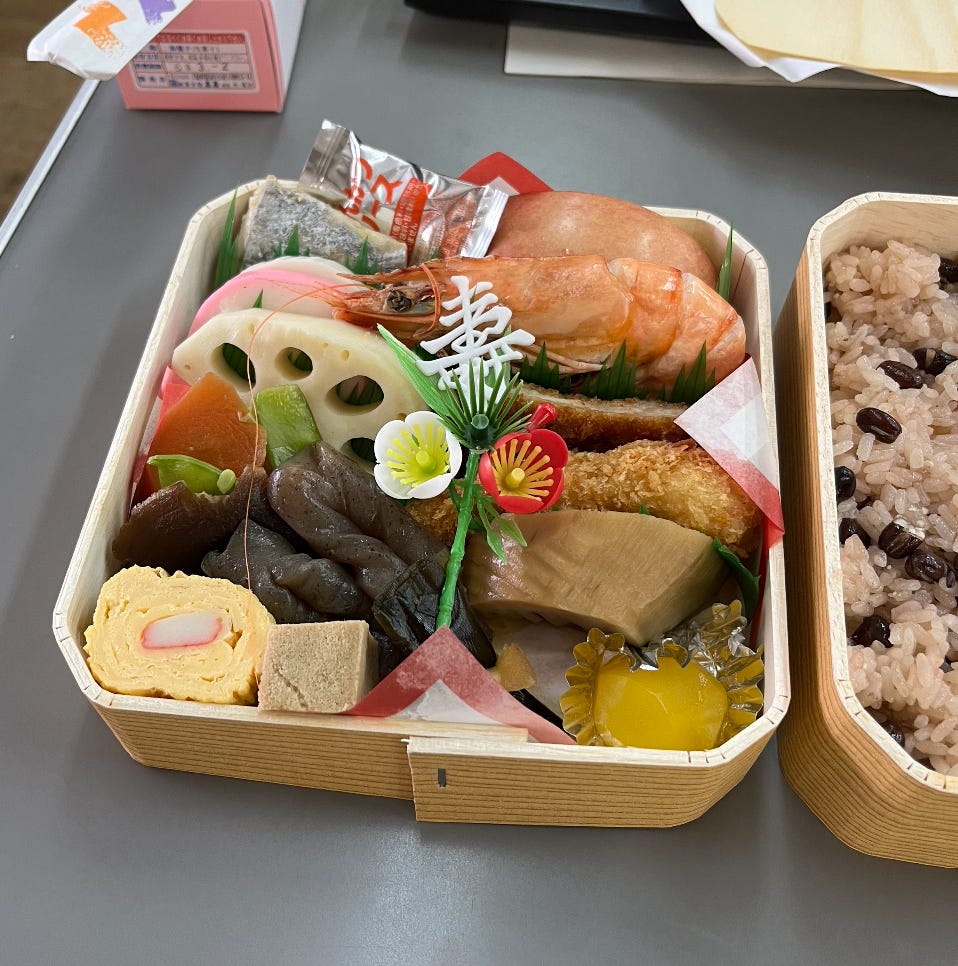
The end of January marked six months of living in Japan, and, by the time I post this, it will be seven. Arriving at the six month mark stirred some emotions, and January felt like a long plateau with the energy of the start of the new year waning. It can be easy to be in your head a lot when live abroad. I definitely found myself questioning whether or not I feel integrated in a community in my town, if I am creating enough friendships with Japanese people, and if I feel fully confident in my workplace and going throughout my day. I think the new year brought about the realization that even if I am settled into my daily life, I’ll always be a little bit out of place living in Japan.
January was either cold or rainy, and on the worst days, it was both. After several days of coming home drenched and shivering after my bike commute, I finally bought rainboots and a raincoat that is actually waterproof (the one I brought from Texas wasn’t cutting it). I did my best to not succumb to the weather and crawl under my futon after getting home from work. I studied Japanese more, and feel like I am making big strides now that I’ve set a goal to pass the JLPT N3 (Japanese language proficiency exam intermediate level) exam during the next testing time in July. I read a lot (currently reading The White Album by Joan Didion and Entangled Life by Merlin Sheldrake) and spent some time at the new-to-me public library in my town. It was recently renovated and is a warm, quiet place to spend some afternoon hours on days when my apartment feels like an icebox. Since the start of the new year, I’ve been going to yoga at a studio in my town. Even better is that I’ve been venturing to the local bathhouses around my neighborhood; there are about four within walking/biking distance. I have found my favorite, which is luckily the closest one to my apartment. I’ve been going weekly, and in most cases, it’s just a few Japanese women over the age of 65 (mind you, you enter the bath completely naked) and me. I’ve gotten a few stares, but am usually greeted with smiles and leave feeling amazingly refreshed.
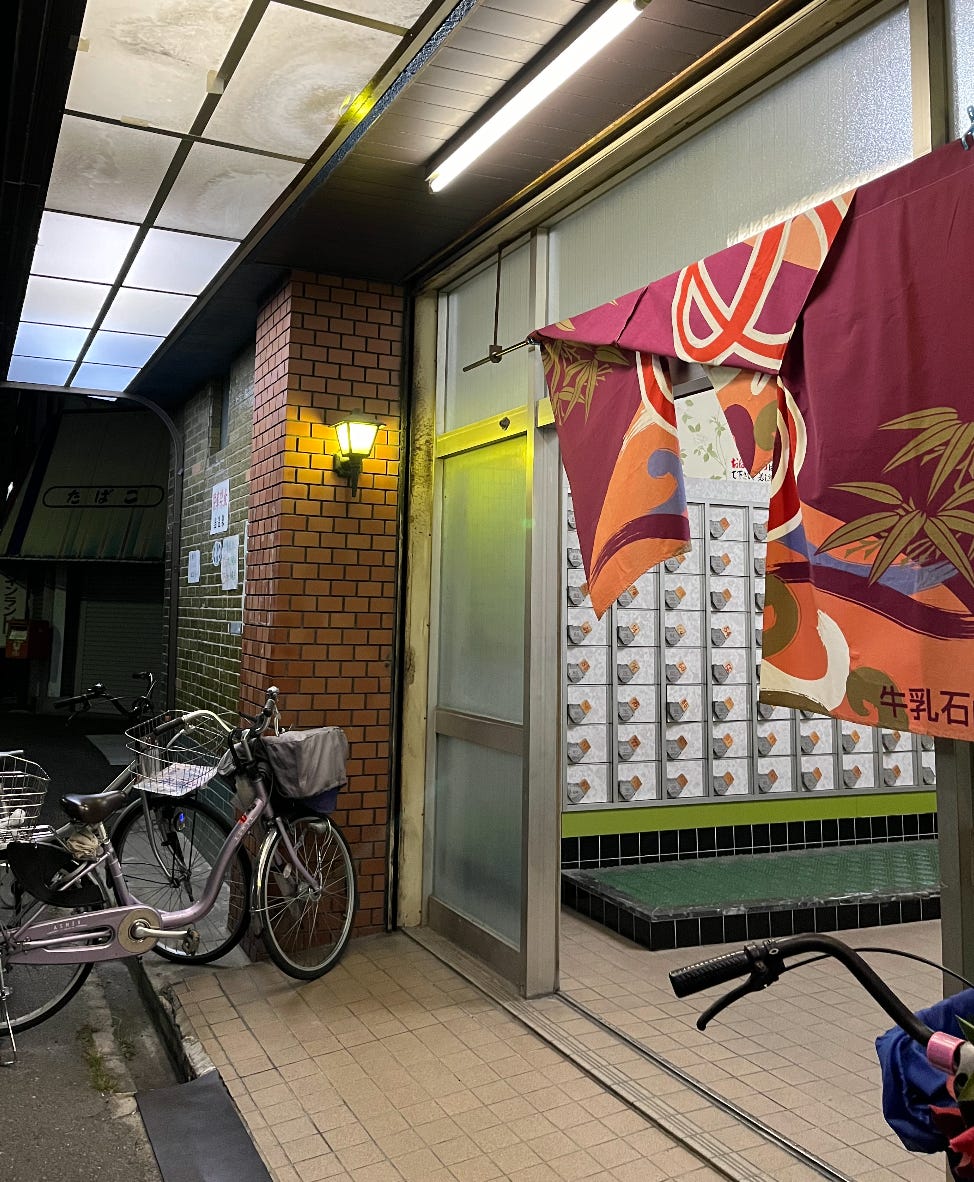
On a random Wednesday in January, I overheard a coworker talking about the Toka Ebisu festival at Imamiya Ebisu Shrine in Osaka. I decided to look it up and made plans with a friend to go that evening. I’m especially glad I did, because this festival is celebrated predominantly in the Kansai region of Japan, where Osaka is, but also because it turned out to be quite the ‘Osaka’ evening — lively, a bit chaotic, lots of drinking involved. Toka Ebisu happens annually on the 10th of January but celebrations range for a few days on either end. Business owners come to wish for good fortune in the new year by praying to Ebisu-Sama (known colloquially as EbisSan), one of the seven lucky gods in the Shinto tradition. EbisSan was known for being a talented fisherman and is depicted holding a sea bream (tai in Japanese). Imamiya Ebisu Shrine in Osaka hosts the biggest celebration of this event. Visitors receive lucky bamboo reeds, pay their dues while praying to EbisSan, and buy amulets to hang in their businesses. Around the main shrine hall of the shrine are hundreds of red lanterns painted with business names — I’m guessing donors to the shrine. It was funny to see my gas company, Osaka Gas, illuminated on one of the red lanterns. Hard to think they’ll need to pray for good luck this year with their monopoly over the city.
While I don’t doubt the traditional, ceremonial aspect of Toka Ebisu, in some ways, it felt like an excuse for Osakans to pretend it wasn’t freezing cold out and enjoy one of Japan’s favorite summertime activities — matsuri, meaning festivals. After making our way through the massive crowd circling the shrine’s courtyard, we did what everyone else was doing — grabbed a beer from the 7-11 on the corner then made our way through the maze of food vendors to enjoy festival foods — yakisoba, takoyaki, and chocolate covered bananas (a new one for me). My friend and I started to talk about the differences between people from Osaka and Tokyo. People in Osaka tend to be more rowdy and willing to strike up a conversation, and there’s a joke that Osaka Obaasan (grandmas) walk around giving candies out to people. (This has actually happened to me on a few occasions.) The people at the festival seemed to encapsulate these personalities. Festival goers paraded through the streets with their bamboo reeds in one hand, a beer (or two) in the other, crowds of teens in streetwear gathered loudly on the sidewalk, and toddlers bounced above the crowds on their parents’ shoulders. I ran into a waiter from an izakaya I’ve been to several times, which felt like a testament to Osaka’s local nature. After a few laps around the food stalls, my friend and I decided to call things a wrap before things got dim. The trash piles became a bit more visible under the fluorescent lights, and stragglers who had had a bit too much to drink stumbled their way back to the train. Besides, by that point, the actual festival procession in the shrine had ended and it seemed people had forgotten the reason they'd come — to pray for good fortune for the new year — rather than to party on a Wednesday. Still, a very fun evening all around.
At the end of January, my students took part in a practice round of a Hyakunin Isshu Karuta Taikai 百人一首カルタ大会 (One Hundred People One Line Karuta Tournament). Karuta is a matching card game played in Japan, and this version of it tests students’ knowledge of Hyakunin Isshu, an anthology of classical Japanese poetry dating back to the Heian Period (late 12th century). This anthology features 100 poems, each by 100 of the best poets of the time. To play Karuta, the poems are written on two matching cards; the first half of the poem is read by the teacher and students have to slap the matching card laid on the table. I got to participate with the students and slapped four or five cards. The cards are written in Hiragana (one of the three Japanese alphabets), and this was a particularly fun way for students to sneakily find out that I can read Japanese.
Our school’s cafeteria is being bought by a new company, meaning the staff, menu, and prices are changing. The student council organized a going away party, and the lead chef (a very old Osaka Ojiichan (grandpa)) talked, while holding back tears, reflecting on the number of students he has served in his tenure in the cafeteria since the school opened in 1980. I said goodbye to the three women cooks who befriended me (or maybe vice versa) over the last few months. I would often end up spending half an hour in the cafeteria chatting with them, even when I had planned to quickly grab a rice ball as a snack. They are all around 40 and have kids, and the uncertainty in their goodbye speeches told me they weren’t exactly sure what was next for them. One of them has an incoming freshmen who will be my student next year, so hopefully I can stay in touch that way.
The rest of January and into mid-February was busy at work. My students had final English presentations which took place over a few weeks, and I spent several afternoons chasing down students who had been absent on presentation days. In Japan, the school year ends in late February/early March and the new year begins in early April, so I will be meeting my new students in a few weeks. I feel like I just really got to know all of my first-year students, their names and interests, so it’s bittersweet that they are moving on to second grade (assuming they pass their exams this week. I say this as a joke, but also have already heard of a few who are being held back). The seniors graduated yesterday morning, hence the special bento. Plum blossoms are starting to bloom and the sakura are soon to follow. Hopefully it won’t be so long before I write another blog post. I still feel like there are things from February about which I want to update you all, so perhaps there will be another little post before long.
Goodbye for now!


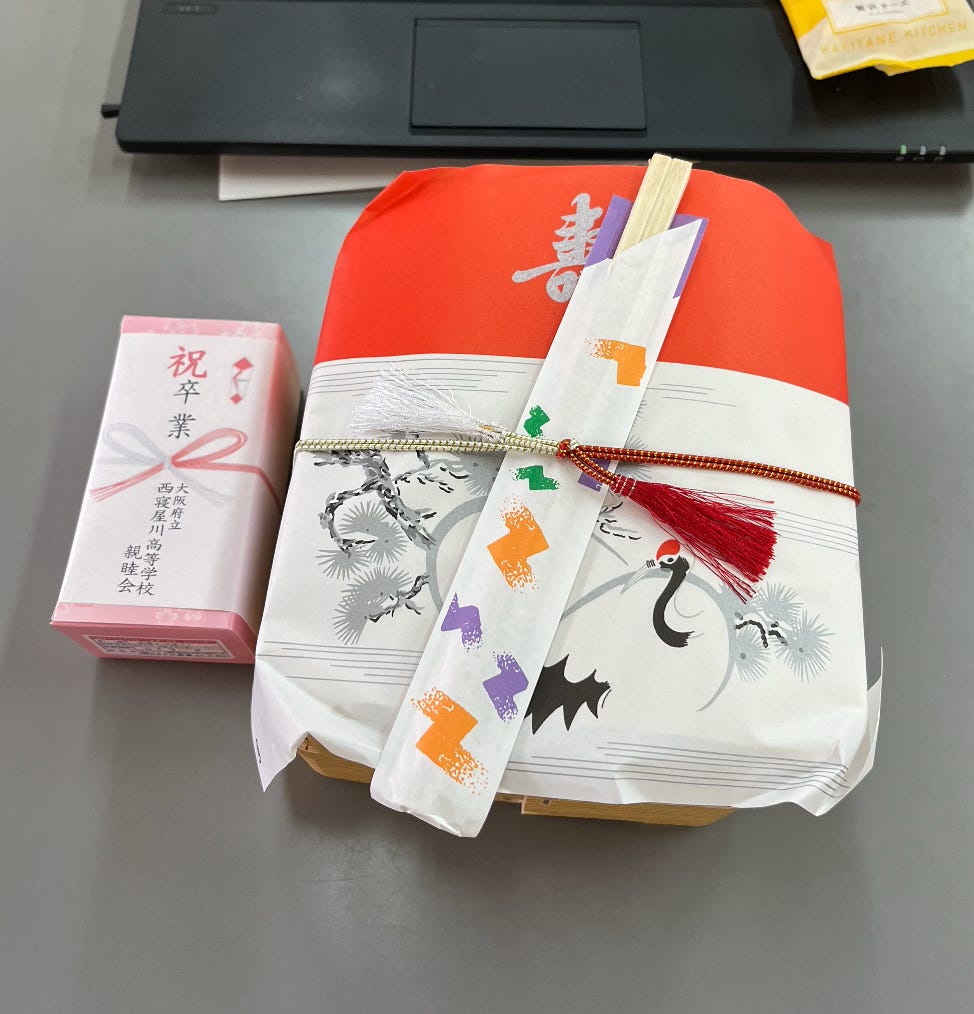
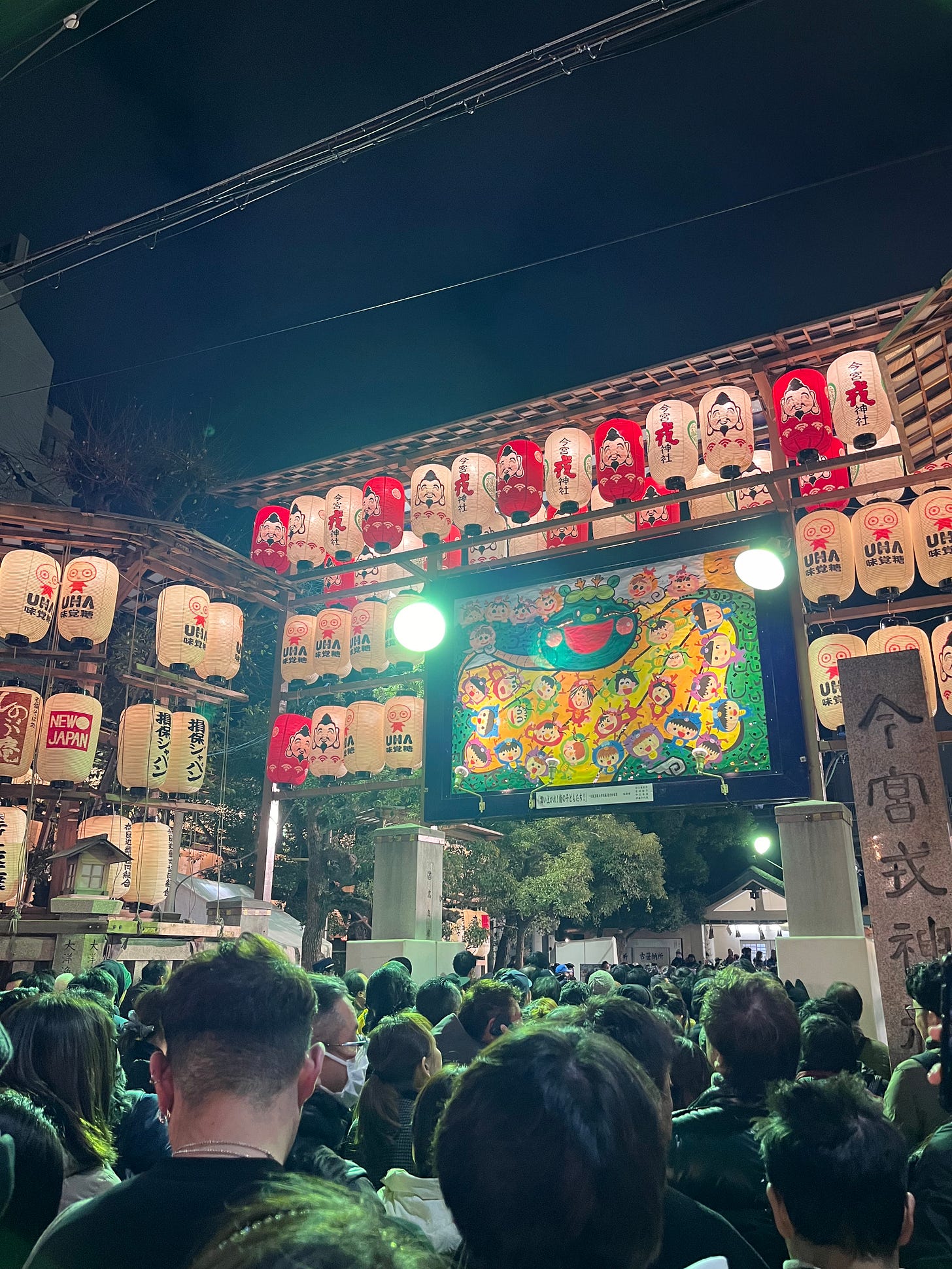
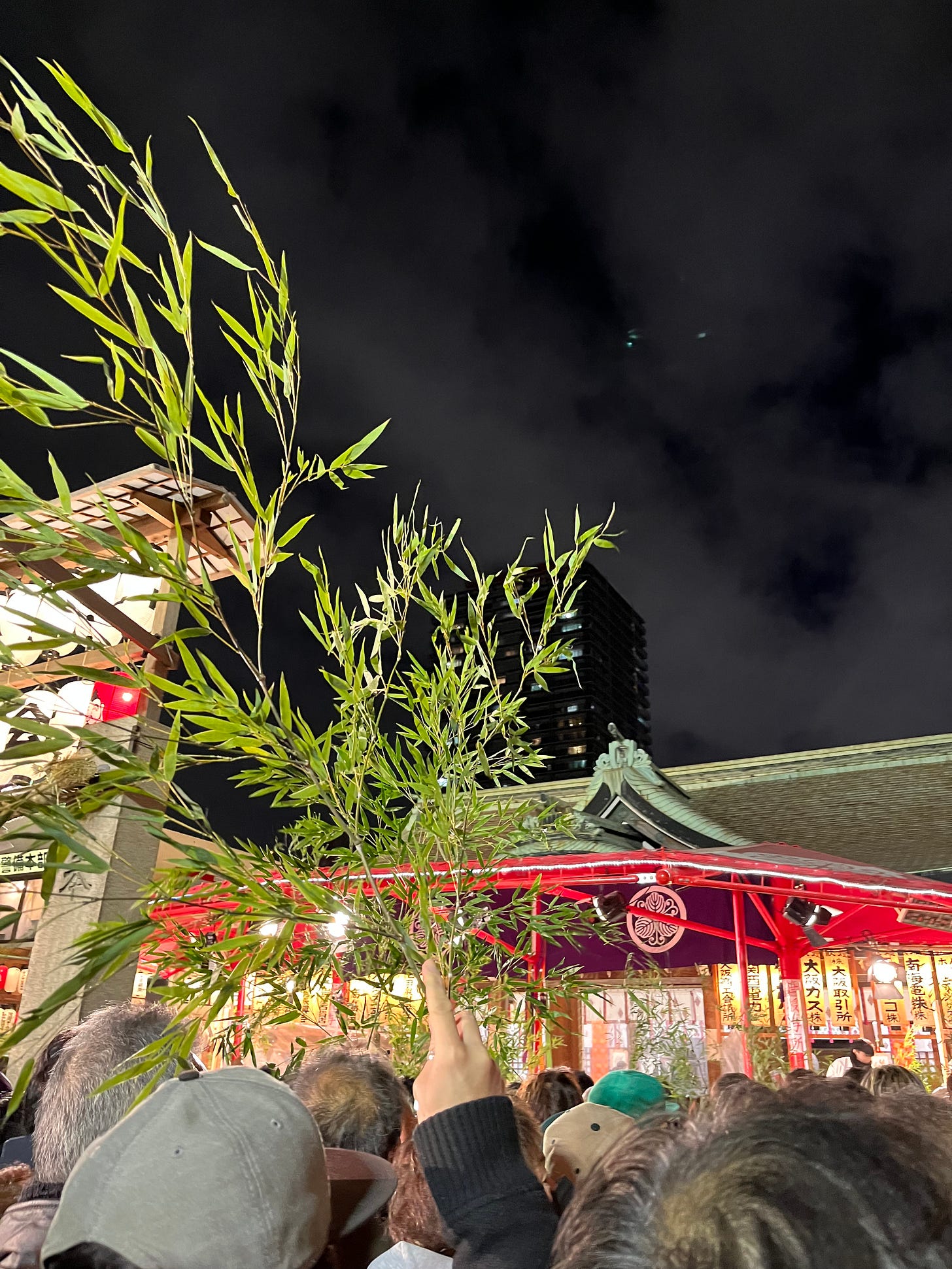
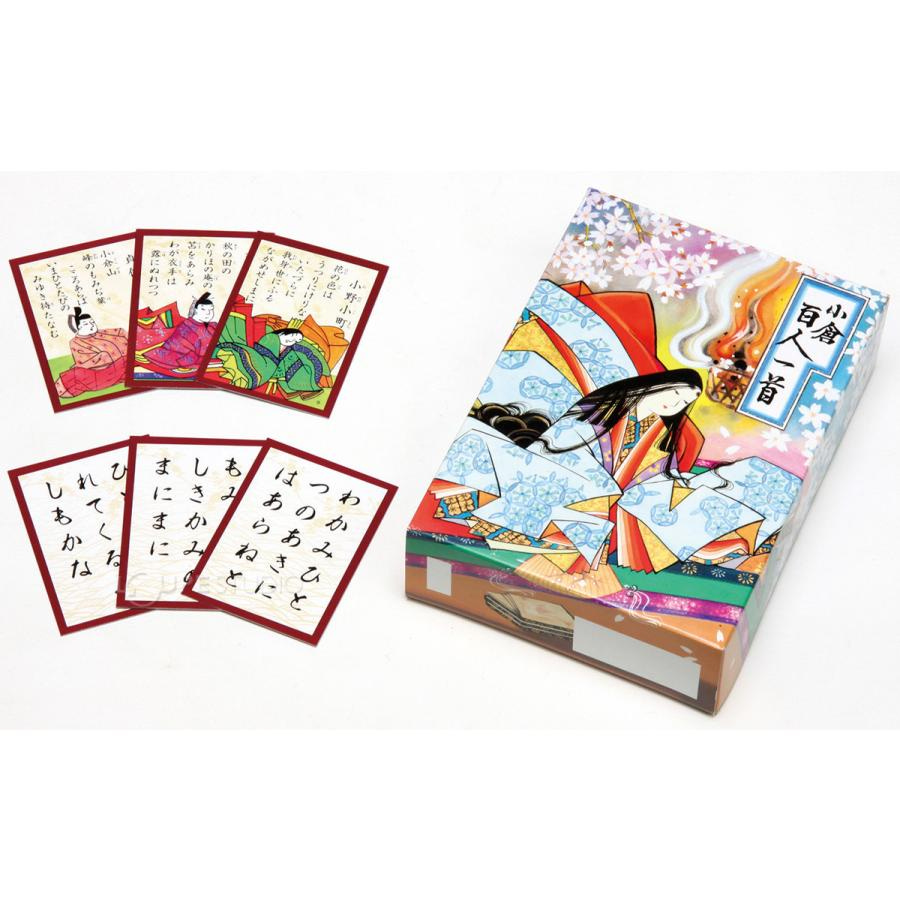

Love that photo of you!! Write more! lol